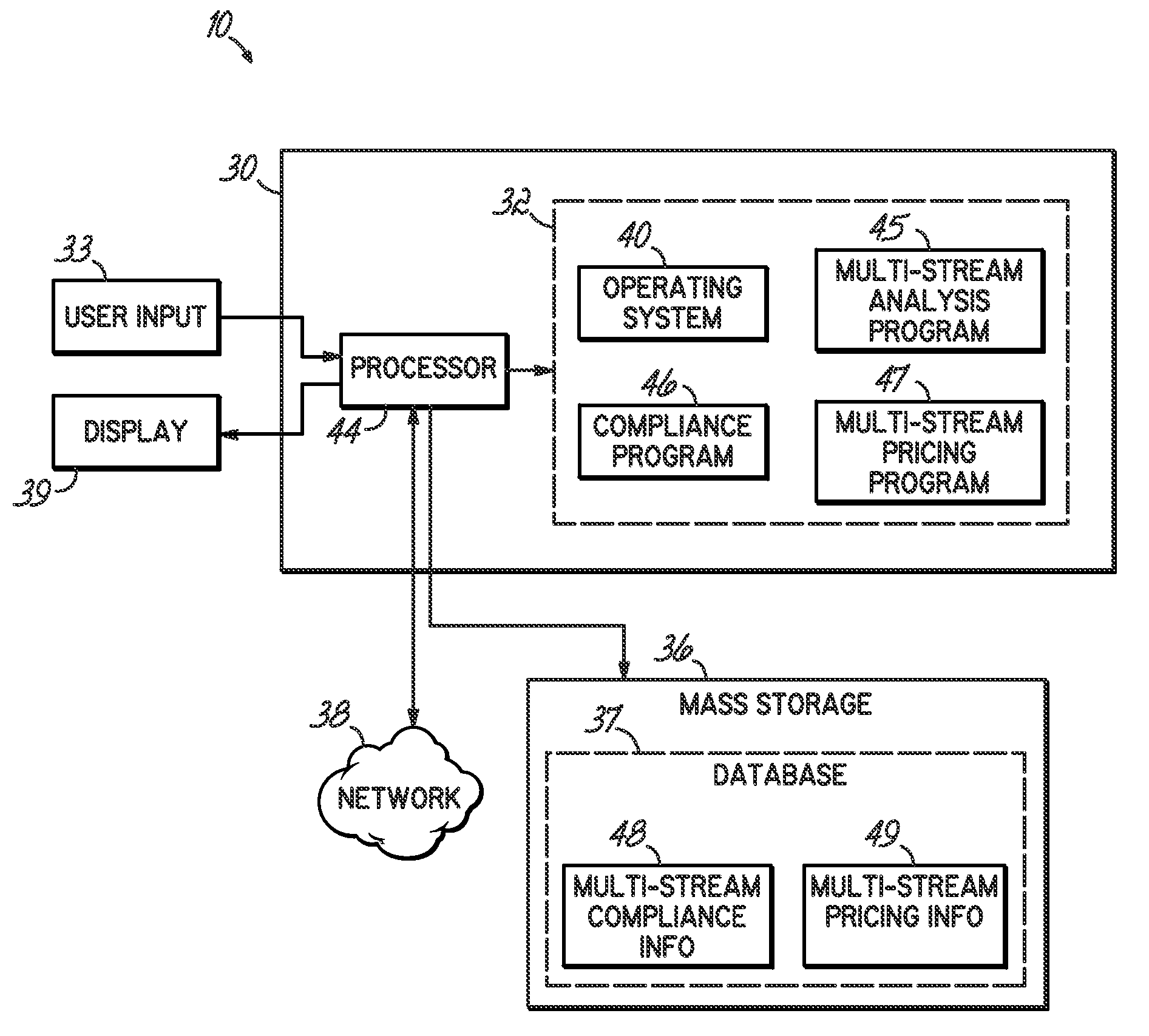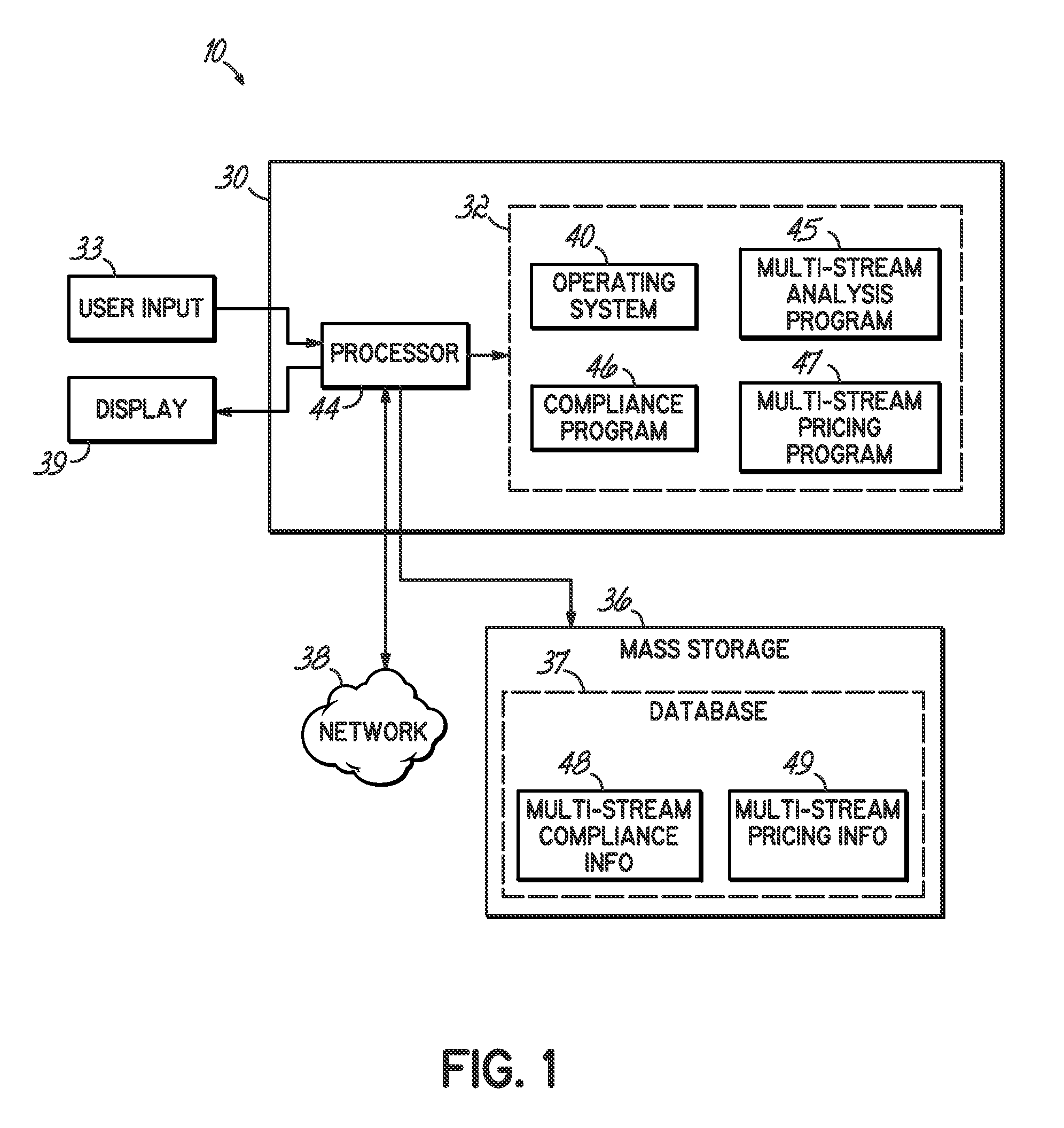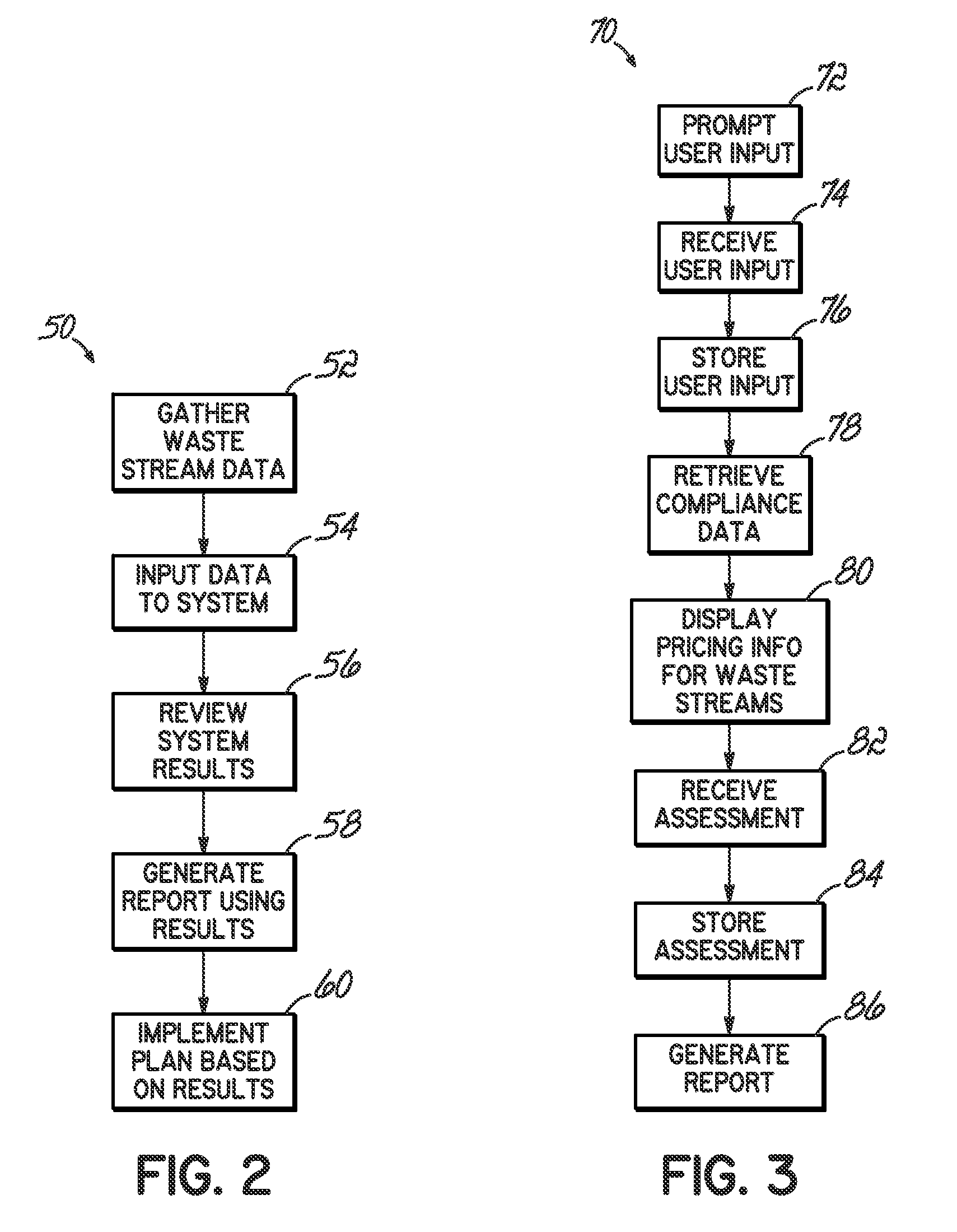Comprehensive healthcare waste assessment system
a waste assessment and comprehensive technology, applied in the field of healthcare services, can solve the problems of inaccurate accounting of waste disposal, difficult control and limit the hospital's risk of unintentional disclosure of this information, complex waste stream assessment, etc., and achieve the effect of improving operating practices, reducing aggregate costs, and reducing was
- Summary
- Abstract
- Description
- Claims
- Application Information
AI Technical Summary
Benefits of technology
Problems solved by technology
Method used
Image
Examples
Embodiment Construction
[0026]A computer implemented method, apparatus and program product analyze medical waste processes by determining waste cost information for a number of waste streams. The waste cost pricing information is organized, formatted, associated or otherwise processed for presentation in a manner that facilitates waste cost analysis.
[0027]Embodiments consistent with the invention provide comprehensive economic, worker safety and environmental compliance analysis of a health organization's waste operation. In one sense, aspects of the invention present a complete solution for healthcare waste steams. The solution typically accounts for all solid waste streams generated by a healthcare facility, including, among others, solid waste, medical waste, hazardous waste, recycling, electronic waste, confidential document destruction, and construction debris. Embodiments may further provide savings opportunities based on right-sizing and component pricing. Compliance with federal OSHA standards and ...
PUM
 Login to View More
Login to View More Abstract
Description
Claims
Application Information
 Login to View More
Login to View More - R&D
- Intellectual Property
- Life Sciences
- Materials
- Tech Scout
- Unparalleled Data Quality
- Higher Quality Content
- 60% Fewer Hallucinations
Browse by: Latest US Patents, China's latest patents, Technical Efficacy Thesaurus, Application Domain, Technology Topic, Popular Technical Reports.
© 2025 PatSnap. All rights reserved.Legal|Privacy policy|Modern Slavery Act Transparency Statement|Sitemap|About US| Contact US: help@patsnap.com



